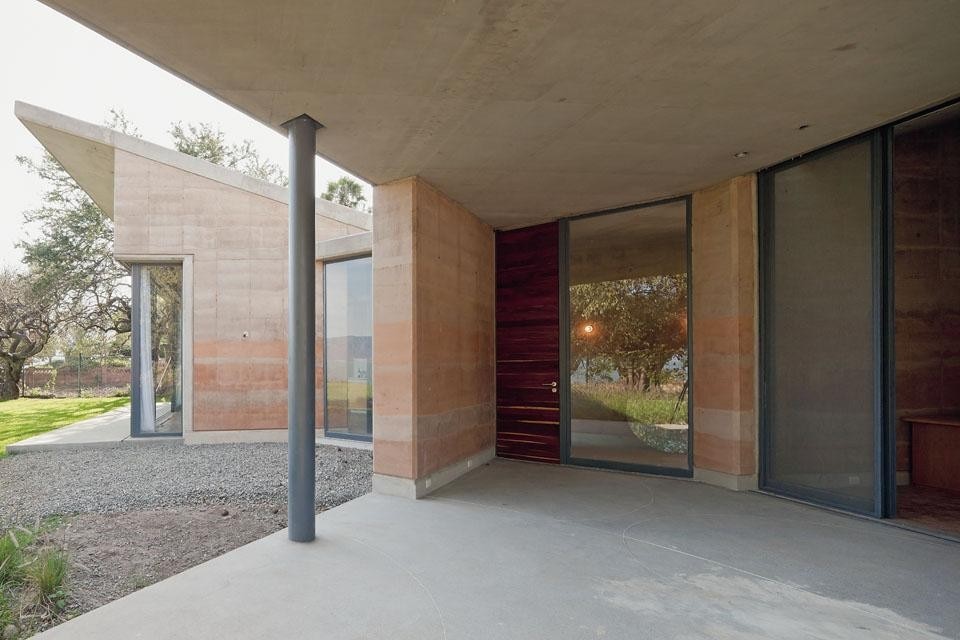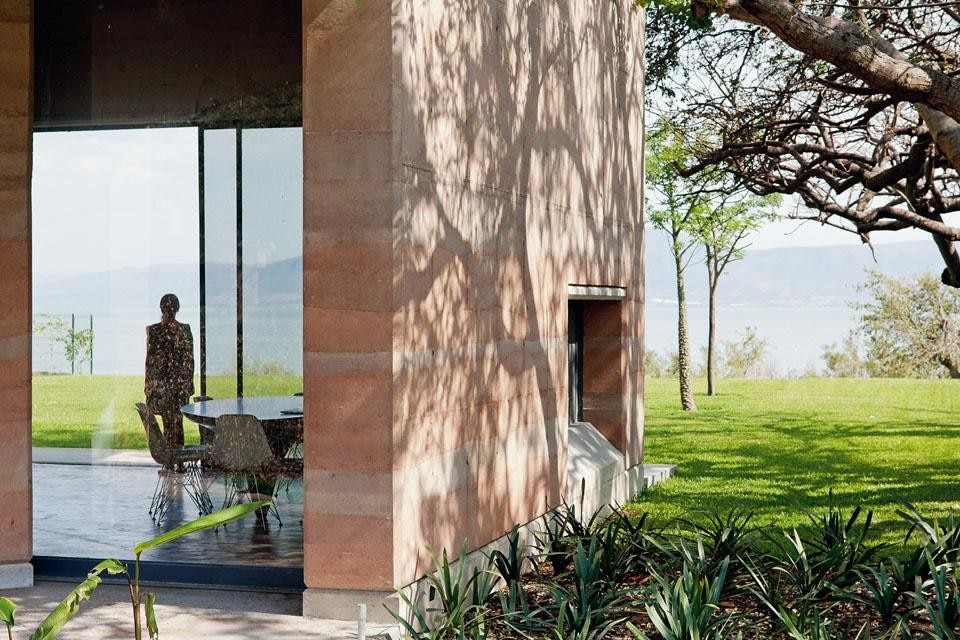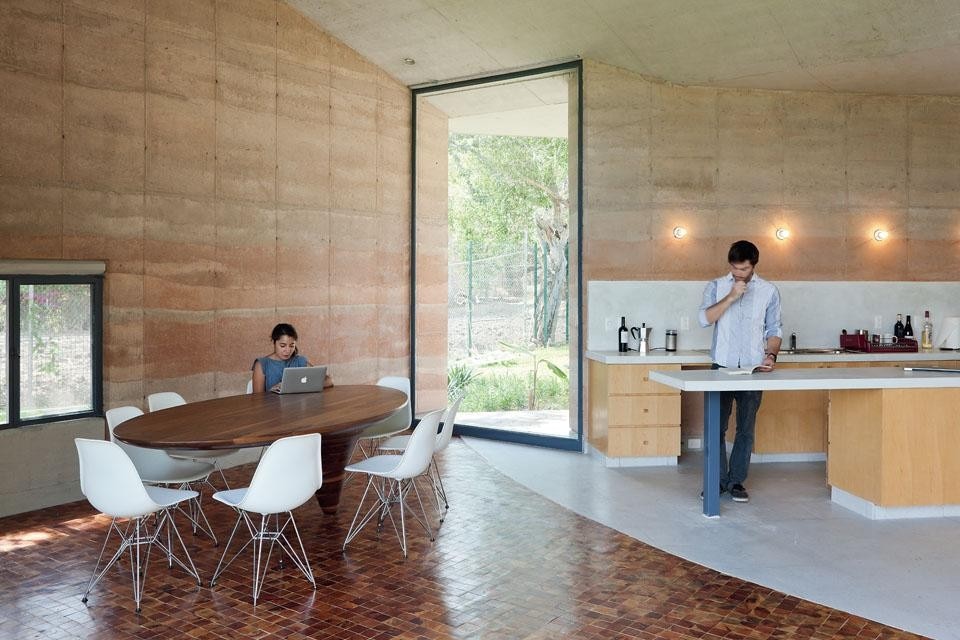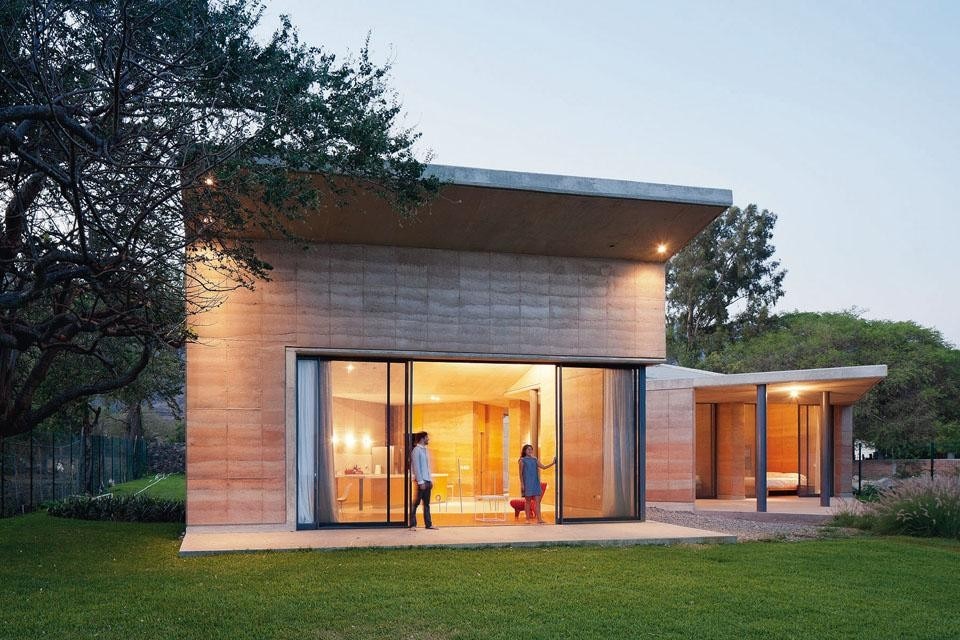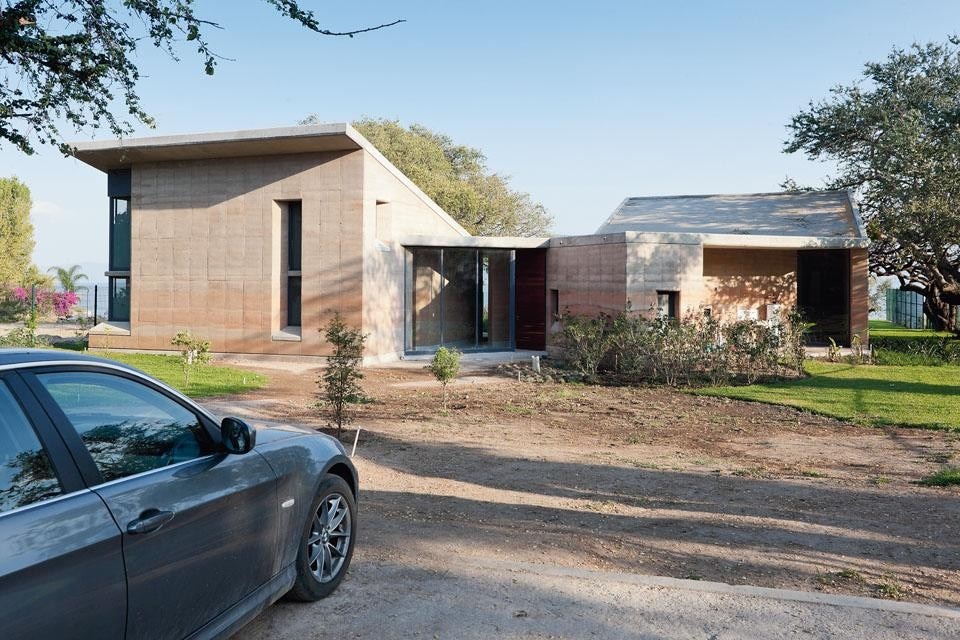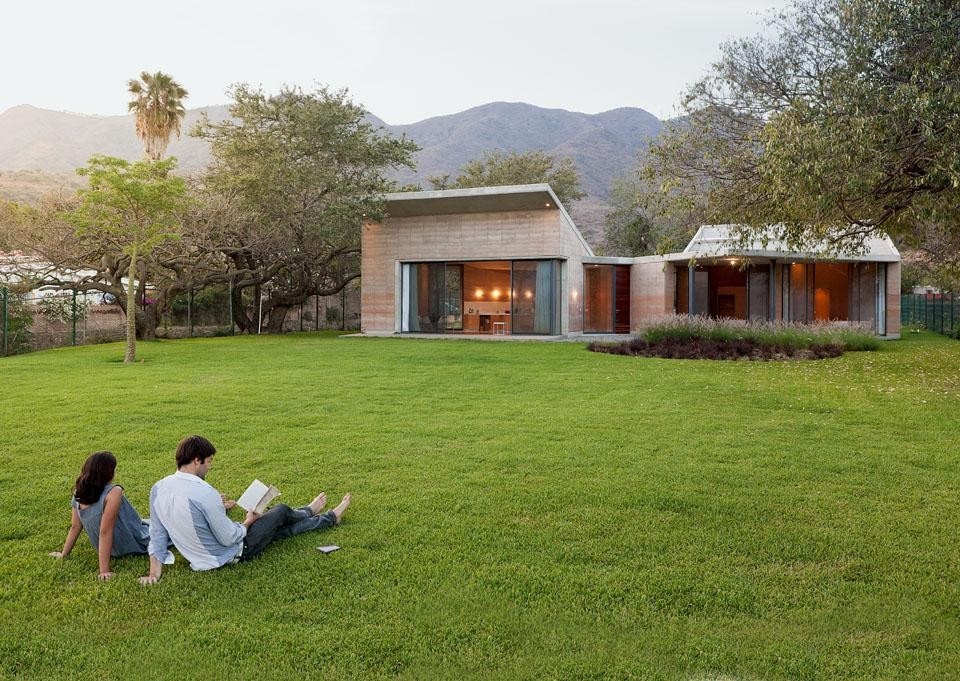This weekend home is located in the beautiful sleepy town of Ajijic, Jalisco, on the northern shore of the largest freshwater lake in Mexico, Lake Chapala. Built for a family of three, the house's design is composed of four cubes, three separate volumes (one for each family member) and a fourth representing the family as a unified whole.
Beyond their symbolic resonance, the cubes are divided between public and private spaces connected through circulations created in the areas where the cubes overlap. The two cubes aligned with the lake and mountain vistas host the common areas, while the two other volumes are more closed, intimate, containing the bedrooms, bathrooms and studio. The construction and distribution of the house poetically reflect on the solidity of the family and the centrality of these relationships to the client, creating quiet, reflective areas as well as permeable communal spaces that open up with views of the surrounding landscape.
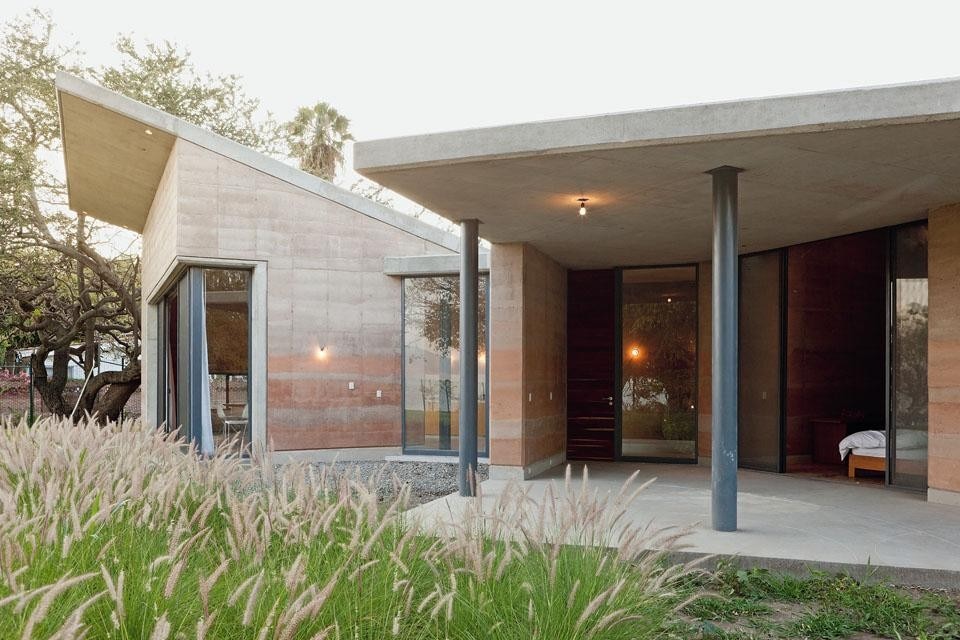
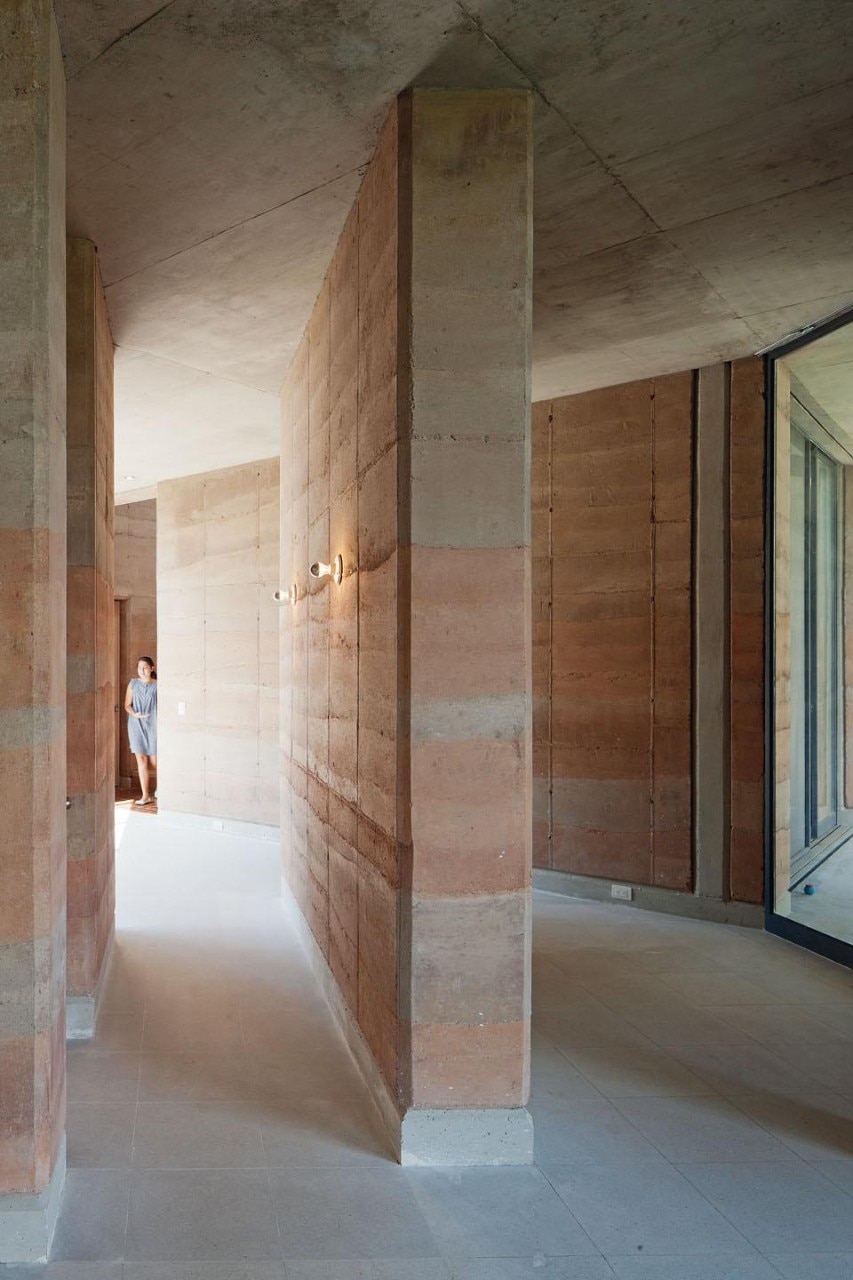
Although labour-intensive, rammed earth constructions ultimately save on energy consumption by creating 'breathing walls' that regulate the internal microclimate of the house while effectively blocking out any surrounding noise.
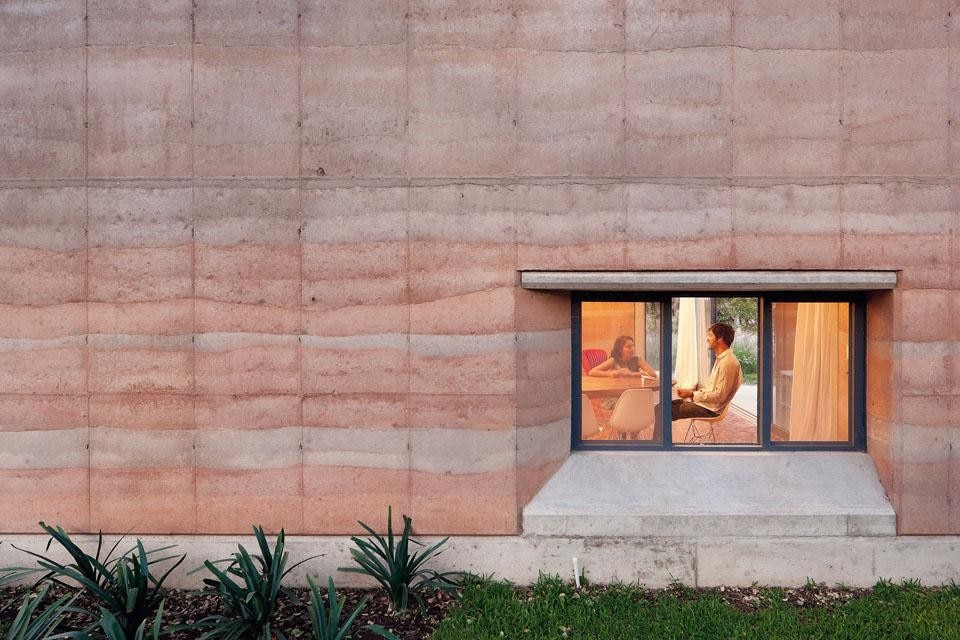
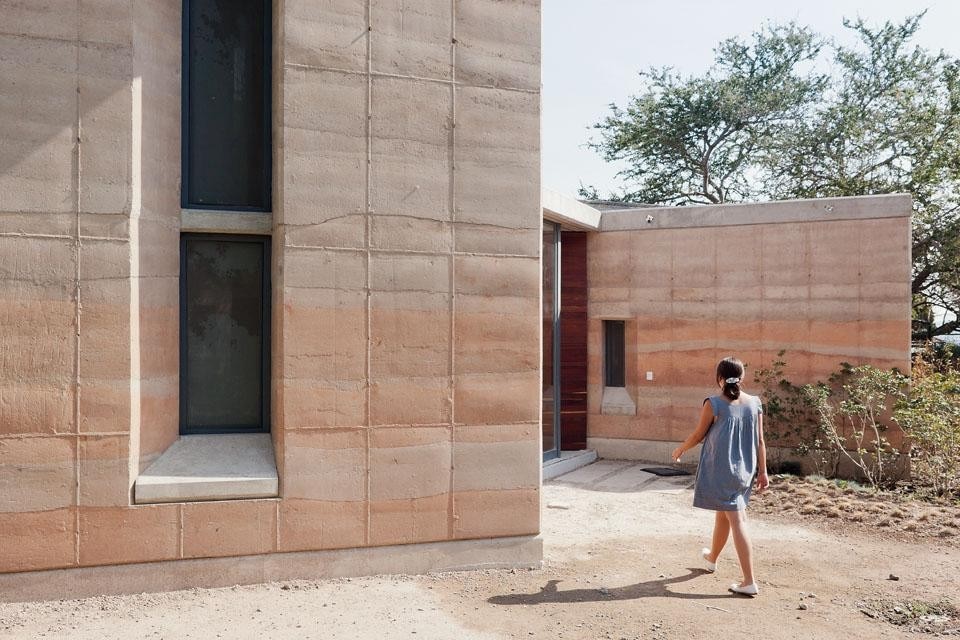
Niki Nakazawa
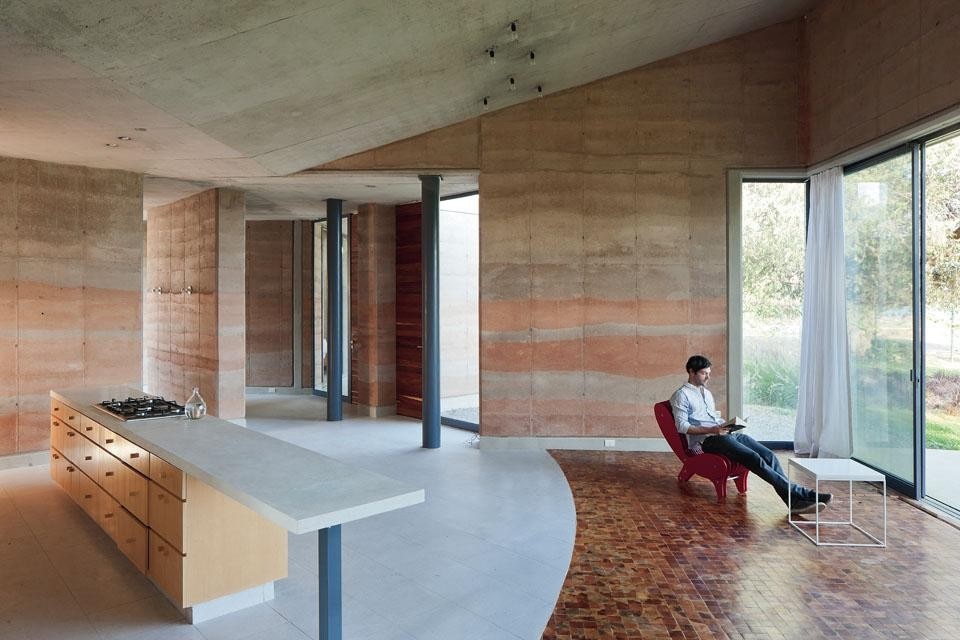
Design team: Tatiana Bilbao, Thorsten Englert, Damián Figueras, Adriana de Carvalho, Alex Cabrales, Marco Robles, Edgar Gonzalez
Construction Supervision: Tatiana Bilbao, Damián Figueras
Structural Engineering: MONCAD, Jorge Cadena
Hydraulic Engineering: Hidrotecnicos S.A.
Electrical Engineering: Incoesa S.A.
Building Contractor: Cabrera & Asociados Arquitectos, Enrique Cabrera
Artists: Vigueta y Bovedilla (Marco Rountree y Rodolfo Diaz), Cynthia Gutierrez
Landscape: TOA, Emiliano Garcia WITH Paisage Tony Rodea
Client: Vivian Charpenel
Total Floor Area: 298 m2
Cost: € 141,000
Design Phase: 10/2009—04/2010
Construction Phase: 05/2010—12/2010
